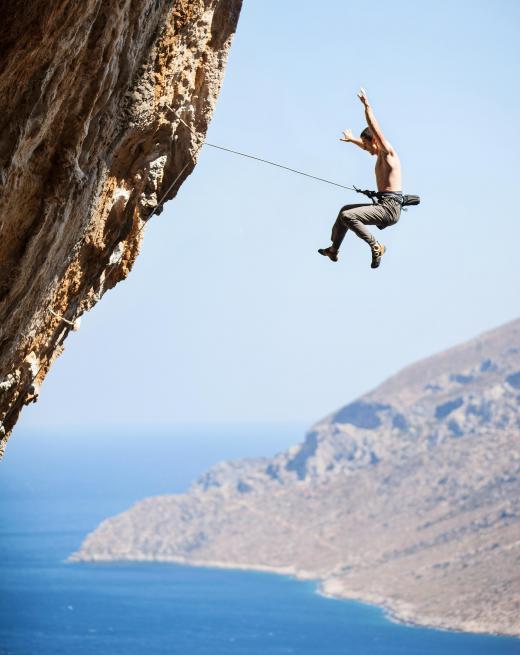At Sports&Hobbies, we're committed to delivering accurate, trustworthy information. Our expert-authored content is rigorously fact-checked and sourced from credible authorities. Discover how we uphold the highest standards in providing you with reliable knowledge.
What is Belaying?
Belaying is a critical technique used in rock climbing. It consists of securing the climber to a rope, or belayer, so he doesn't fall very far in case of slipping off the rock. In the past, belaying was accomplished simply by tying a rope around the waist of the climber. While basically effective, this technique also posed a higher risk of injury to the climber.
Modern belaying techniques use a belay device, a straightforward system consisting of a climbing harness, an automatic pulley, and a belay loop, all of which are attached to the climbing rope. Depending on the weight difference between climbers, an equalized anchor may also be used for stability. This system is known as semi-direct belaying, since most of the load is taken by the belay device rather than by the climber.

Belaying is done in pairs most of the time. The rope is controlled by either the leading climber or a designated partner who remains on the ground. Known as the belayer, this person is in control of the rope and can easily hold the entire weight of the falling partner without much effort. Self belaying is possible, but only experienced climbers should attempt it. By setting up a series of top rope anchors on the way down, a self belaying climber can reclimb the way with a mechanical ascending device that slides up the rope.
Belaying is relatively simple once all equipment has been properly fitted. The end of the rope that goes to the climber is known as the live end. The opposite end is known as the brake. Both ends are handled by the belayer, who keeps control of the brake via the belay device. To communicate, climbers use a series of commands, or climbing calls, such as "slack" for "I need extra rope," and "belay off," which means that the climber has reached the top and can now get off the rope.
Belaying systems come in a variety of sizes and designs, and can be bought for as little as US$200. Top-of-the-line equipment, however, can run into the thousands of dollars. Auto-locking belay devices are the most popular type in use today. They operate with a system similar to a car's seatbelt, locking down when sudden force is applied to it. This safety feature makes auto-locking the preferred choice for beginners and indoor belaying, including gyms and climbing schools.
AS FEATURED ON:
AS FEATURED ON:











Discuss this Article
Post your comments